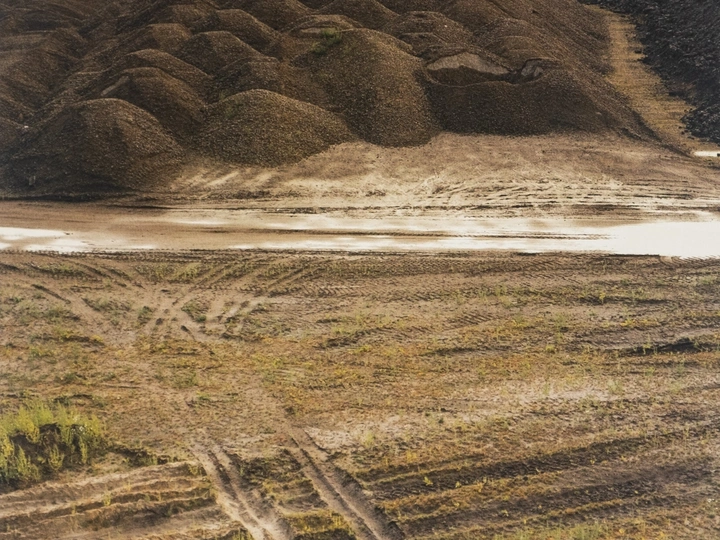Reinventing resilience for the Wasteocene Era

Her doctoral research, entitled "Strategies of Re-signification between Archaeology and Landscape", embodies a passionate and relentless inquiry into neglected heritage and marginal landscapes, with a particular emphasis on strategies for their reactivation. She rigorously explores themes such as ecology in landscape architecture, the intrinsic value of marginal heritage, and the complex dynamics that define its rules and trajectories.
Her methodological approach involves a constant questioning and re-elaboration of thought, effectively conveyed through writing and graphic arts, which serve as her primary instruments for giving form and meaning to design reflection. In 2022, she conducted thesis research as a visiting student at the École d’Architecture Paris Malaquais (AAP - Art Architecture Politique department), under the supervision of philosopher Marco Assennato, deepening her study of Marc Augé's concept of non-lieux and Gilles Clément's Tiers paysage. That same year, she graduated cum laude from the University of Catania in Architecture and Building Engineering, with a thesis on landscape design and restoration. Since 2023, she has been a member of the design group Liminal and is registered with AIAPP (Italian Association of Landscape Architecture). In 2024, she became a visiting researcher at the École d’Architecture of Versailles, where her work focuses on the relationships and activation strategies between heritage and wasteland landscapes. Her active participation in numerous conferences (UPhD Green 2024, ReUSO 2024, Visualizing Landscape_VL 2024, IFAU23, etc.), workshops, and Summer Schools (UIDSS2024, Digital Heritage Camp 2024_E-RIHS) has resulted in various publications related to methods of representation and strategies for investigating and reactivating marginal heritage. A possible ambition is to join an editorial board, allowing her to further fuel this continuous research and integrate it even more deeply into her daily professional life.
Contemporary landscapes stand as a tangible symbol of the Wasteocene, an era characterized by socio-ecological connections that generate discarded places. This context is intrinsically linked to global inequalities and the pervasive influence of surveillance systems, which fragment reality and exacerbate the separation between individual and collective.Global environmental issues are, in this sense, inextricably interconnected with urban challenges, manifesting as residual and marginal spaces, products of discontinuities and inefficiencies, which necessitate innovative reactivation strategies.This contribution addresses the re-design of living environments, investigating novel design approaches for resilience in discarded places and narratives, in margins suspended across time and space. The research adopts "commoning" as an antidote to wasting relationships, promoting socio-ecological practices that reactivate collective systems and strengthen relationships through shared resource management. This methodology translates into design experimentations aimed at reconnecting nature, redesigning the commons, and reinforcing the social fabric, thereby counteracting territorial and social discriminations. Landscape design thus becomes a process, triggering transformations and fostering the appropriation of liminal spaces. This is also evident in infrastructural and edge contexts, which are transformed into new centralities through the implementation of biotic and porous architectures.The research employs an integrated and multidisciplinary methodology to address the complexity of residual landscapes, developing four primary lines of action: Co-evolutionary modeling of landscape systems; Exploration of the symbolic and cultural dimension of margins; Proposal of design solutions Inspired by historical and natural processes.Rooted in the urgency of the environmental crisis this proposal aims to transform denied places into horizons of possibility for a common future.